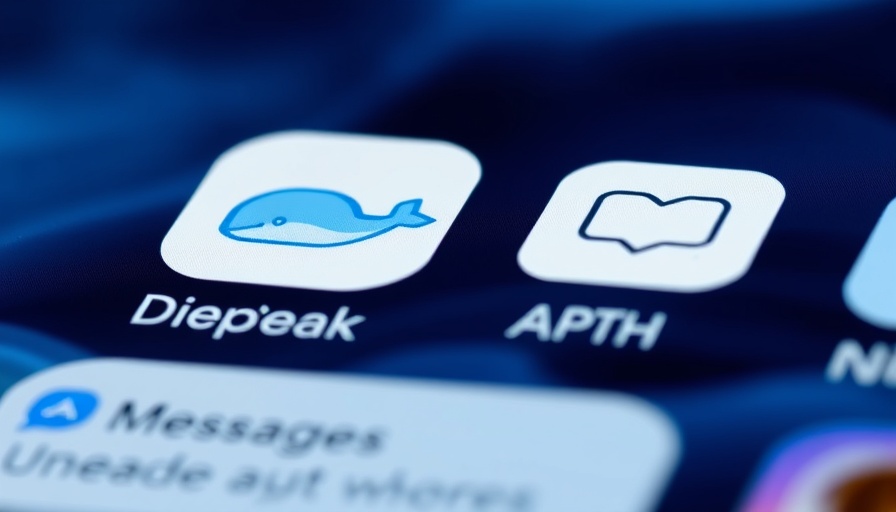
DeepSeek: The Rise of a New AI Contender
In the rapidly evolving landscape of artificial intelligence, DeepSeek has emerged as a key player, drawing attention not only for its unique chatbot application but also for the implications it has on the global AI race. Just weeks ago, the app skyrocketed in popularity, claiming the top spot on both the Apple App Store and Google Play. This meteoric rise invites critical evaluation of the competition between U.S. and Chinese innovations in AI technology.
DeepSeek's Unique Origins and Innovations
Rooted in the financial world, DeepSeek is a creation of High-Flyer Capital Management, a quantitative hedge fund in China leveraging AI for trading. Co-founded by Liang Wenfeng, the company diverged into AI research, giving birth to DeepSeek in 2023. Unlike traditional tech companies, DeepSeek has positioned itself with a distinct mission: to develop advanced AI tools appealing to both enterprise and consumer markets.
What sets DeepSeek apart is its approach to AI model training. Despite facing U.S. export restrictions affecting hardware access, the lab developed efficient techniques to train its models. These efforts culminated in the release of the DeepSeek-V2 and later DeepSeek-V3 models which have outperformed existing technologies in critical benchmarks while maintaining affordability, pushing its competitors to rethink pricing strategies.
How Does DeepSeek Compare to Existing Models?
The DeepSeek-V3 stands out for its impressive capabilities. Internal benchmarks revealed that it surpasses widely recognized competitors like Meta's Llama and OpenAI's GPT-4 in performance. The introduction of the reasoning model, R1, showcases another facet of DeepSeek's innovation, enabling the AI to validate its findings, a significant breakthrough for reliability in complex fields like science and mathematics.
DeepSeek's competitive edge in the market not only highlights the technological evolution but also reflects broader economic trends as traditional giants adapt to new standards set by emerging players.
What Challenges Lie Ahead for DeepSeek?
Despite its rapid growth and strong performance, DeepSeek faces substantial challenges. As a product of Chinese development, regulatory scrutiny and market access issues can directly impact its global competitiveness. Furthermore, as technological exports remain contentious under U.S. policies, the company may struggle to maintain its pace of innovation if reliant on restricted hardware.
This unfolding situation reveals the importance of geopolitical factors in technological development, noticeably impacting global strategies for investors and stakeholders.
The Future of AI: Opportunities and Implications
Looking ahead, DeepSeek's success could serve as a catalyst for further advancements in AI technology, especially as it challenges established paradigms within the industry. Executives across industries should take this as an opportunity to evaluate their own AI strategies. The rise of DeepSeek offers a case study in how agile startups can disrupt entrenched players by leveraging efficiency and innovation.
As demand for AI tools grows, businesses must remain adaptable, integrating insights from emerging technologies like those offered by DeepSeek into their operations for a competitive edge. Early adoption and proof-of-concept examples will be crucial for organizations aiming to harness the potential of these advanced AI applications.
Conclusion: A Call to Action for Business Leaders
The landscape of AI is shifting as new players like DeepSeek rise in prominence. For decision-makers, integrating insights from DeepSeek's journey can prepare your organization for the evolving demands of technology. Embrace these innovations, assess their potential impact, and consider how they align with your strategic goals. The future belongs to those who adapt and innovate.
 Add Row
Add Row  Add
Add 




Write A Comment